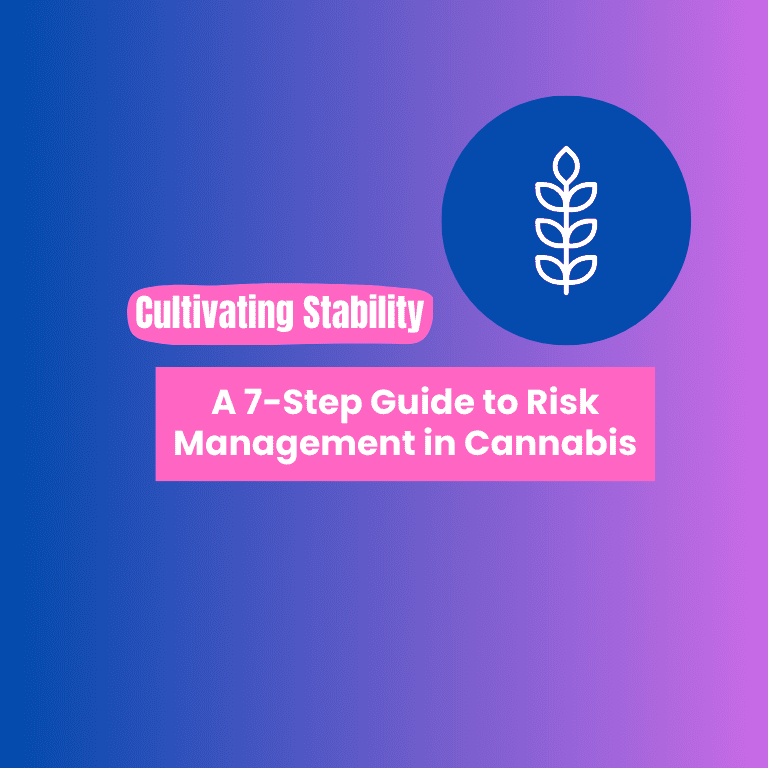Cultivating Stability: A 7-Step Guide to Risk Management in Cannabis

The cannabis industry is booming, with unprecedented growth opportunities attracting entrepreneurs and investors alike. However, along with the potential for profit comes a myriad of risks and uncertainties that can threaten the stability and success of cannabis businesses. From regulatory compliance to supply chain disruptions and market volatility, navigating the complex landscape of the cannabis industry requires effective risk management strategies. In this article, we present a comprehensive 7-step guide to risk management tailored specifically for the cannabis sector.
Step 1: Identify Risks
The first step in effective risk management is identifying potential risks that could impact your cannabis business. These may include regulatory changes, product quality issues, security threats, financial challenges, and supply chain disruptions. Conduct a thorough risk assessment to understand the specific risks facing your business and prioritize them based on their likelihood and potential impact.
Step 2: Assess Risks
Once you’ve identified potential risks, assess each one to determine its severity and likelihood of occurrence. Consider the potential financial, operational, and reputational impacts of each risk. Use risk assessment tools and techniques such as risk matrices or scenario analysis to quantify and prioritize risks based on their level of threat to your business.
Step 3: Develop Risk Management Strategies
With a clear understanding of your risks, develop risk management strategies to mitigate, transfer, or accept them. Implement controls and safeguards to reduce the likelihood and impact of identified risks. This may involve implementing compliance procedures, enhancing security measures, diversifying suppliers, or securing insurance coverage. Tailor your risk management strategies to address the specific needs and vulnerabilities of your cannabis business.
Step 4: Monitor and Review
Risk management is an ongoing process that requires regular monitoring and review. Establish procedures to monitor key risk indicators and track changes in the business environment that could impact your risk profile. Review your risk management strategies periodically to ensure their effectiveness and make adjustments as needed. Stay informed about emerging risks and industry trends to proactively address potential threats to your business.
Step 5: Build a Resilient Culture
Effective risk management requires the involvement and commitment of everyone in your organization. Build a culture of risk awareness and accountability among your employees, encouraging them to identify and report potential risks proactively. Provide training and resources to help employees understand their role in mitigating risks and adhering to compliance requirements. Foster open communication and collaboration to address risks collectively as a team.
Step 6: Establish Contingency Plans
Despite your best efforts to mitigate risks, unexpected events may still occur. Establish contingency plans to manage crises and minimize disruptions to your business operations. Identify key stakeholders and decision-makers responsible for implementing contingency measures in response to emergencies such as product recalls, security breaches, or natural disasters. Test your contingency plans regularly through simulations or drills to ensure their effectiveness.
Step 7: Continuously Improve
Risk management is a dynamic process that requires continuous improvement and adaptation to changing circumstances. Learn from past experiences and incorporate lessons learned into your risk management practices. Stay abreast of industry developments, regulatory changes, and best practices in risk management to refine your strategies and maintain the resilience of your cannabis business over time.
Cultivating stability in the cannabis industry requires a proactive and systematic approach to risk management. By following this 7-step guide, cannabis businesses can identify, assess, and mitigate risks effectively, ensuring their long-term success and sustainability in a rapidly evolving industry. By prioritizing risk management and building a culture of resilience, cannabis entrepreneurs can navigate the challenges of the industry with confidence and cultivate stability amidst uncertainty.











